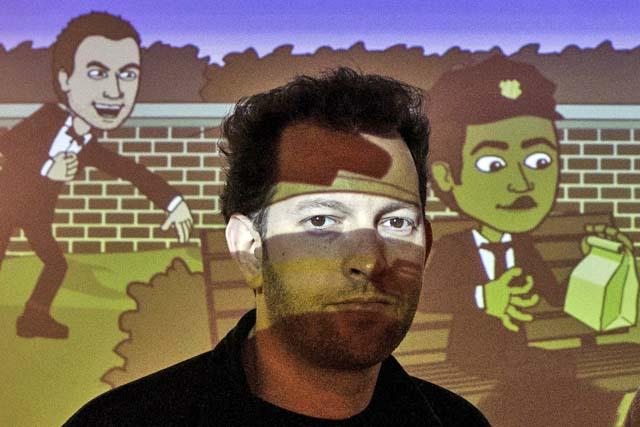With an indelible link to the Middle East and Gulf region in particular, the latest “Y62” generation Nissan Patrol was initially launched in Abu Dhabi back in 2010, while the latest face-lifted and updated 2014 version made its debut at the recent Dubai motorshow. First introduced in 1951, the first two Patrol generations were basic, rugged, capable and utilitarian off-roaders in the vein of the Land Rover or Willys Jeep, but by 1980 became bigger and better kitted; by 1987 adopted coil spring suspension for added refinement and off-road ability and has since become more luxurious.
The flagship Nissan SUV, the vast Patrol is a “big beast” in more ways than one, and inherits a huge and loyal Middle East following as a large family vehicle, while previous generations are thoroughly durable off-road and tuner cult car favorites in the Gulf. While more basic versions of the rugged previous generation Patrol continue in some markets, the larger, more refined and luxurious new generation has made a big impact in the regional market, and with 15,500 examples sold in 2012 and an anticipated final tally of 20,000 for 2013, commanded a 32 per cent market share in the Gulf by August 2013.
Big in the Middle East
Available in a limited number of markets, the 2014 Patrol is very much aimed at its biggest Middle East market, and is considered as a regional “brand image driver” for Nissan. As such, the latest face-lifted Patrol was researched and developed with Middle East customer feedback in mind and 13,000 hours of regional testing. According to Nissan, the Patrol’s comfort levels and how it conveys a sense of power was well received, while respondents preferred a greater variety of colours and a sportier look, which the 2014 model addresses with what is, for the most part, a subtle but effective aesthetic and interior refresh.
With a hulking sense of proportion and presence, the 2014 is a more chiseled-looking machine, whose most noticeable changes include a more sculpted front bumper design with sharper creases and fog-light surrounds, and a sportier and moodier light cluster redesign that includes LED elements. The 2014 model noticeably uses more chrome elements to its re-styled grille, which replaces the black honeycomb background with chrome slats, and chrome side port surrounds. Rear lights lose the clear casing and gain chrome surrounds, while new multi-spoke 20-inch alloy wheels are another highlight for upscale trim versions, and are particularly fetching in two-tone black and silver.
Smooth delivery
With its naturally aspirated 5.6-litre V8 engine carrying over unchanged for 2014, and developing a mighty 400HP at 5,800rpm and 413lb/ft torque at 4,000rpm — as driven — the Patrol is a brisk mover for a nearly 2.8-tonne full-size SUV, and will make the 0-100km/h dash in an estimated 6.5-seconds. Running a direct fuel injection system and driven through a seven-speed automatic gearbox to efficiently utilise its engine, higher spec 400HP Patrol versions’ estimated 16.8l/100km city and 11.76 highway fuel consumption figures are restrained for its class. However, with such weight and power, spirited throttle inputs increase consumption, and it is no wonder that the Gulf is its most popular market.
Silky smooth, progressive and happy to be revved hard, the Patrol’s engine is highly refined rather than a rumbling V8, and with good throttle control, one precisely dials in power. With its enormous weight one works the engine and gearbox with meaningful throttle depressions for brisk, eager off-the-line, flexible mid-range and revvy high-end delivery. Smooth and timely shifting, the seven-speed gearbox well-compliments the engine’s refinement and while gears can be sequentially selected through the lever, there are no steering-mounted gearbox shifters. Entry-level spec Patrols receive 315HP engines without direct injection and a choice of five-speed automatic or six-speed manual gearboxes.
Refined ride
With sophisticated independent double wishbone suspension all-round combined with active hydraulic dampers, the Patrol is smooth, refined and well-controlled through corners for its size. Sprung for a combination of comfort over cracks, bumps and unevenness on straights, the Patrol’s dampers however firm up through corners to reduce body roll and maintain poise. Certainly not a vehicle to wantonly throw through narrow hairpins, the Patrol however availed itself well on fast but tightly winding routes. Highway stability was similarly reassuring, while its adaptive dampers impressively reigned in the pitch and dive often associated with vehicles of this class, size and weight on hard acceleration and braking.
With vice-like four-wheel-drive grip, the Patrol effectively puts its power down, turns in well for a tall and heavy vehicle and grips hard through fast corners. Steering is generally geared high and is light, but has reasonably good precision, and comes with automatically variable assistance levels. Ride quality smooth, with high levels of refinement from noise, vibration and harshness, despite the big alloy wheels and relatively low tyre sidewalls. Upscale Patrol versions receive a host of optional driver and safety assists, including intelligent cruise control with distance control, brake assistance with collision warning, lane departure warning and prevention, and blind spot warning and intervention systems.
Rugged road-tripper
Well-equipped for off-road driving, the Patrol’s independent suspension keeps tyres in contact with ground, and lockable four-wheel-drive and locking rear differential retains traction over loose surfaces, while low gearbox transfer ratios allow high power driving at crawling pace. Generous approach, ramp and departure angles are complemented by electronic hill descent control and automatically optimised driving modes for road, rock, sand and snow. A hugely capable tow vehicle, the Patrol holds a production vehicle Guinness World Record for towing a 170.9-tonne cargo plane over 50-metres in August 2013. One however feels that high-end Patrols should be offered with entry-level models’ smaller 18-inch wheels and higher profile tyres for off-road driving.
With a commandingly high driving position, cavernous interior and cargo space, and extensive mod cons including Bose sound system and DVD screens, the eight-seat Patrol is an ideal road trip companion. Comfortable and indulgent, the Patrol features adjustable steering and seats and looks best with the new tan leather upholstery. Generously appointed with soft touch textures, shiny metallic accents and highly lacquered woods, the Patrol features big dials and user-friendly layouts. To help maneuver the enormous Patrol, optional equipment includes a Back-up Collision Intervention system and multi-angle Around View Monitor parking system incorporating a parking assist guide that lines to should follow to park in tight spots.
SPECIFICATIONS
Engine: 5.6-liter, in-line V8-cylinders
Bore x stroke (mm): 98 x 92mm
Valve-train: 32-valve, variable valve timing, DOHC, direct injection
Gearbox: 7-speed automatic, four-wheel-drive
Drive-train: Locking rear differential and low gear transfer case
Gear ratios: 1st 4.887:1 2nd 3.17:1 3rd 2.027:1 4th 1.412:1 5th 1:1 6th 0.864:1 7th 0.775:1
Reverse / final drive ratios: 4.041:1 / 4.395:1
Power, HP (kW): 400 (294) @ 5,800rpm
Torque, lb/ft (Nm): 413 (560) @ 4,000rpm
0-97km/h: 6.5-seconds (est.)
0-160km/h: 17.8-seconds (est.)
Fuel consumption, city / highway: 16.8 / 11.76 liters/100km (est.)
Fuel capacity: 100 + 40 litres
Height: 1,940mm
Width: 1,995mm
Length: 5,165mm
Wheelbase: 3,075mm
Tread, F/R: 1,706 / 1,704mm
Minimum Ground clearance: 273mm
Kerb weight: 2,750-2,800kg (est.)
Gross vehicle weight: 3,500kg (est.)
Tyres: 275/60R20
Approach / departure angles: 26.6° / 25.9°
Steering: speed-sensitive power assisted rack and pinion
Turning radius: 12.1-metres
Suspension: Independent, double wishbone with active hydraulic damping
Brakes, F&R: Ventilated discs
Seating capacity: 8


















